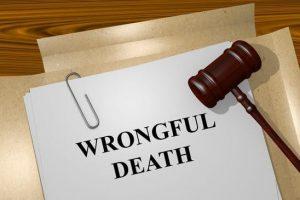
If you’ve lost a loved one due to someone else’s negligent actions, you have the right to seek damages. To recover fair compensation, you may need to file a lawsuit. If you decide to go to court, you have to determine who the liable parties are.
To find out who pays for a wrongful death lawsuit, you need to conduct an in-depth investigation, find responsible parties, and prove their negligence. In some cases, more than one party may be liable. An experienced wrongful death attorney can help you determine liability and file a lawsuit against all liable parties.
Parties Responsible for Wrongful Death Damages
Depending on the circumstances of the incident that led to your loved one’s death, one or more of these parties may end up paying for the wrongful death lawsuit.
For a free legal consultation, call 800-537-8185
Insurance Companies
In many cases, the at-fault party’s insurance company can cover your wrongful death damages.
- Auto insurance – if a wrongful death occurs during a traffic accident, the at-fault driver’s insurance company can cover the damages. If the driver is underinsured (the minimal insurance may not be big enough to compensate for wrongful death damages), the company pays up to the limit, or you can sue the driver directly.
- Homeowners insurance – if the wrongful death occurred on a residential territory, homeowners’ insurance may cover your damages. For example, if your loved one was fatally injured while at someone else’s house and can prove their negligence, homeowners’ insurance can pay for the lawsuit.
- Renter’s insurance – if the wrongful death occurs on a rental property, the renter’s insurance can cover the damages. For example, if a person who is in a friend’s rented apartment slips, falls, and sustains a severe injury that leads to death, the insurance may cover wrongful death damages.
- Premises liability insurance – if wrongful death occurs on commercial property, the owner’s premises liability insurance can cover the damages. To obtain compensation through this type of insurance, you would need to prove premises liability.
- Medical malpractice insurance – if wrongful death occurs due to a medical mistake, the doctor’s, clinic’s, or hospital’s malpractice insurance may cover the damages.
Another type of insurance that could cover partial wrongful death damages is PIP (Personal Injury Protection). It can compensate for funeral expenses and survivor benefits. In the majority of states, PIP is an optional part of auto insurance.
Individuals
If a person is responsible for the death of your loved one, you can file a wrongful death lawsuit against them directly. This usually happens if they don’t have any of the above-mentioned insurance policies.
You can also file a direct lawsuit if the person is underinsured. For example, if a person dies in a car accident, the compensation is limited by the at-fault driver’s auto insurance coverage. In the majority of states, the minimum bodily injury coverage is $25,000 per person.
If the amount of your damages is bigger than what an insurance company can cover, you can sue the at-fault driver directly. When it comes to individuals, you can either negotiate a settlement or go through a trial.
Click to contact our personal injury lawyers today
Government Entities
In rare cases, it’s possible to prove that a government entity is responsible for a person’s wrongful death. These wrongful death lawsuits usually have a shorter statute of limitations and caps for non-economic damages. The government may even have immunity from wrongful death liability if:
- Death resulted from execution or enforcement of a court order.
- Death resulted from natural temporary dangerous conditions on the road.
- Death resulted from natural conditions on government property.
If you believe that the government is responsible, you are likely to need an attorney to fight for you in court. If you prove liability and negligence, the government may have to pay. Keep in mind that the federal government is exempt from punitive damages.
Employers
If a wrongful death occurred when the at-fault party was working, their employer may be responsible for covering damages. For example, it can happen if a truck driver who is on duty crashes into another vehicle and causes the other driver’s death.
In this case, the employer may be responsible for covering wrongful death damages. More often than not, employers have some type of insurance. If they are underinsured or uninsured, you can sue the company directly.
Hospitals
If your loved one dies as a result of medical malpractice in a hospital, you can sue the hospital for wrongful death damages. This can happen when:
- Physicians, nurses, and other healthcare professionals employed by the hospital demonstrate negligence.
- The hospital demonstrates negligence when hiring healthcare professionals or maintaining the equipment.
Your attorney may also recommend suing the hospital if the negligent doctor’s insurance coverage is too small to compensate for your damages.
Manufacturers
A manufacturer can be responsible for the death of your loved one if they create a defective product. Product defects that may cause wrongful death include:
- Design defects – you would need to show that safer design options were available to the company but they designed a defective product anyway.
- Manufacturing defects – you would need to prove that other products of the same design didn’t fail, which means that a problem occurred at the manufacturing stage.
- Marketing defects – you would need to prove that the manufacturer failed to provide instructions on how to use the product safely and avoid a fatal outcome.
When you sue a manufacturer for wrongful death, you file a product liability claim. Liable parties can include the manufacturer, spare part manufacturer, assembling professional, wholesaler, and retailer. Your attorney can determine the liable party by figuring out which defect led to your loved one’s death.
Questions?Call 800-537-8185
to find a Morris Bart office near you.





